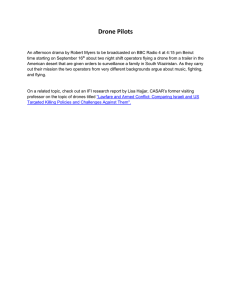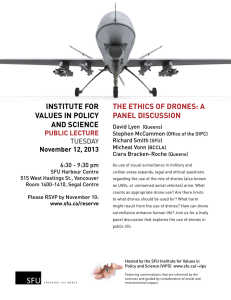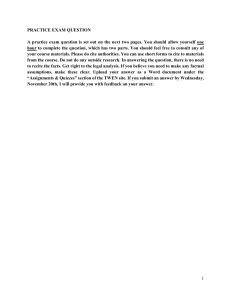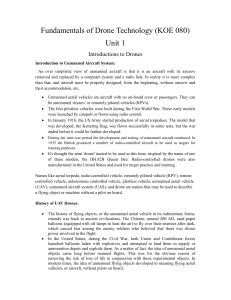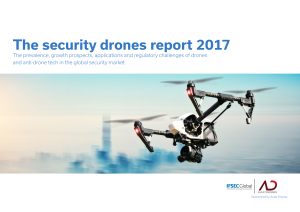Drone Implications: Environmental, Moral, Ethical Analysis
advertisement
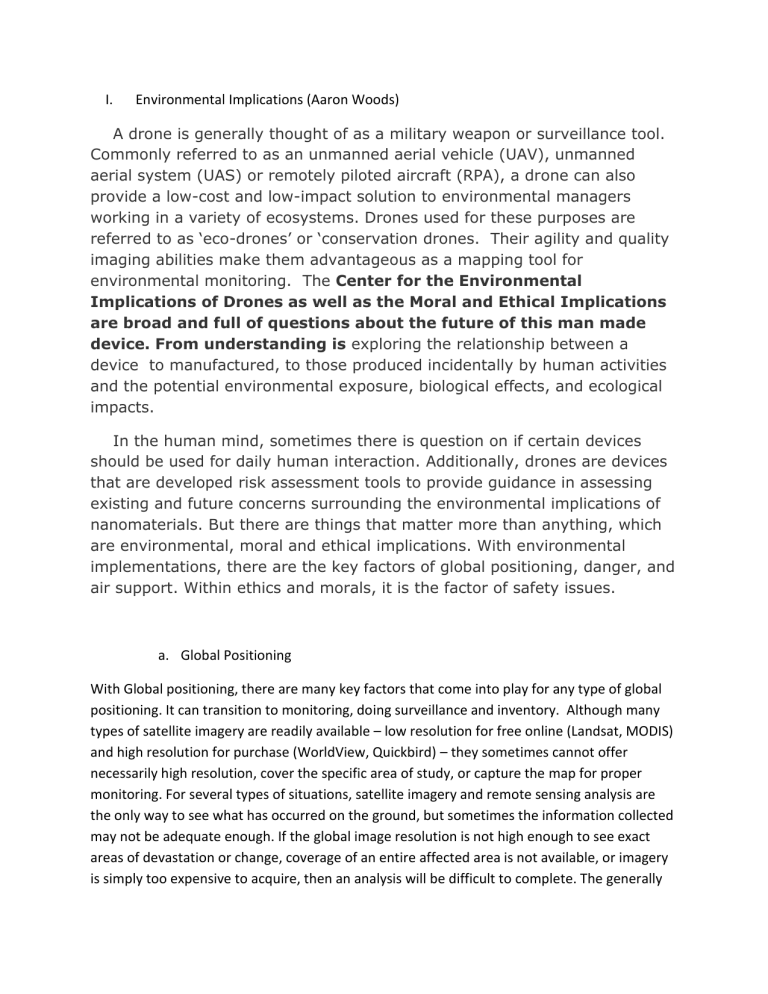
I. Environmental Implications (Aaron Woods) A drone is generally thought of as a military weapon or surveillance tool. Commonly referred to as an unmanned aerial vehicle (UAV), unmanned aerial system (UAS) or remotely piloted aircraft (RPA), a drone can also provide a low-cost and low-impact solution to environmental managers working in a variety of ecosystems. Drones used for these purposes are referred to as ‘eco-drones’ or ‘conservation drones. Their agility and quality imaging abilities make them advantageous as a mapping tool for environmental monitoring. The Center for the Environmental Implications of Drones as well as the Moral and Ethical Implications are broad and full of questions about the future of this man made device. From understanding is exploring the relationship between a device to manufactured, to those produced incidentally by human activities and the potential environmental exposure, biological effects, and ecological impacts. In the human mind, sometimes there is question on if certain devices should be used for daily human interaction. Additionally, drones are devices that are developed risk assessment tools to provide guidance in assessing existing and future concerns surrounding the environmental implications of nanomaterials. But there are things that matter more than anything, which are environmental, moral and ethical implications. With environmental implementations, there are the key factors of global positioning, danger, and air support. Within ethics and morals, it is the factor of safety issues. a. Global Positioning With Global positioning, there are many key factors that come into play for any type of global positioning. It can transition to monitoring, doing surveillance and inventory. Although many types of satellite imagery are readily available – low resolution for free online (Landsat, MODIS) and high resolution for purchase (WorldView, Quickbird) – they sometimes cannot offer necessarily high resolution, cover the specific area of study, or capture the map for proper monitoring. For several types of situations, satellite imagery and remote sensing analysis are the only way to see what has occurred on the ground, but sometimes the information collected may not be adequate enough. If the global image resolution is not high enough to see exact areas of devastation or change, coverage of an entire affected area is not available, or imagery is simply too expensive to acquire, then an analysis will be difficult to complete. The generally the versatility of drones creates the potential for them to fill the data gap between satellites and ground surveying in the above-mentioned cases. In addition, drones can do much more than image acquisition, occasionally making them a great advantage over typical satellite or aircraft image achievement. i. Monitoring 1. Finding people in need of help 2. Migration patterns 3. Endangered species status 4. Agriculture With technology constantly rising, it seems that there are things that seem to be out of reach. Especially for people that live in the country. For people that live in places where agriculture matters, then we could see that drones being effective for growth and stabilization. Its best for being able to find a person that gets lost in the woods, forest or mountains. In the city, everything is labeled to certain points that make it easier for people that do not know the location to easily track their way around. In uncivilized areas, even small islands, it’s extremely hard for people in a new environment to find their way around. In dire emergency situations where a person is in trouble, people need someone that can track them as fast as possible before something life threatening occurs. It’s the same concept for animals and other endangered species. To actually thin about it, it’s very hard for humans to track certain things, drones can fly over the Artic to observe sea ice conditions and track seal populations ii. Surveillance 1. Illegal activity a. Poaching b. Illegal fishing c. Illegal trade iii. Inventory 1. Monitoring government property 2. Urban expansion Drones have the potential to increase data collection efforts and contribute to inventory and accounting. Specific environmental and ecosystem applications suitable for the use of a drone can range from precision agriculture, to mapping coastline or soil erosion, to species and habitat monitoring. Drones can be launched into the eye of a hurricane to measure wind speed at altitudes and conditions in which a manned aircraft could not do. One of the most common civil applications is rangeland management (Rango and Laliberte, 2010). b. Checking for danger i. Checking for bomb facilities ii. Disaster Risk Management 1. Map impacted areas 2. Broadcast messages Hazardous and difficult to reach areas such as fragile coastlines are well suited for drone mapping. c. Giving air support i. Giving guidance ii. Another source to predict the weather iii. Pointing out routes that may slow down production time. II. Moral and Ethical Implications (Aaron Woods) a. Safety issues i. Spying on people ii. A deadly error machine iii. Legal issues


